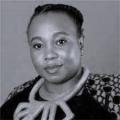In a previous article, I alluded to the fact that some of the negative aspects of Indaba could be remedied. So what exactly constitutes a good exhibition?
As a ‘buyer’ I would like to attend an exhibition where I could have at least 42 pre-set appointments with the products that interest me and that I want to meet with. As a ‘seller’ I would like to have 42 appointments with buyers that also appeal to me. As a regional, city or town exhibitor, I would like to have 42 appointments with 42 representatives of the media. This format happens successfully at many exhibitions around the world.
How can we achieve this goal here at home? Firstly SA Tourism has to anchor the show. It needs to get the active support and sponsorship of SAA and all the other airlines that fly to SA. Also the Airports Company, hotels, the host city and tour operators with transport need to come to the party. The venue has to come up with a very special rate supported financially by the host city. Sponsors get free or reduced rates to exhibit. The partially sponsored floor space allows a greater percentage of the exhibitors’ fees to be apportioned to getting the buyers through the door.
SA Tourism then invites and targets around 1 000 hosted and semi-hosted buyers and 200 members of the media. After screening their applications the buyers pay a registration fee of US$300. They purchase their own air tickets from the sponsoring airlines at a rate that is capped by the host organising committee. Example: If you come from London you may spend US$1 000, but if you come from Beijing you can spend up to US$1 200.
The buyers/media are then accommodated for four nights on a complimentary basis with heavily reduced rates by the sponsoring hotels. They are transported between the hotels and exhibition (also subsidised by the tour operators). Buyers and sellers are given a computer-matched roster with 42 appointment slots: 32 are pre-selected and 10 to be finalised at the venue as part of registration.
Who is going to pay for all this you might ask? Firstly the organisations listed above. Secondly the registration fee, the Department of Tourism, the provinces, the host city and other sponsors. The exhibitors’ fees should go more towards this expense and less than trying to maximise a profit out of Indaba. It works overseas.
SA Tourism then has to invite exhibitors that will enhance the show. Ideally there should be around 1 200 desks so that at any given time everybody is busy. When the buyer is finished at the end of the last day he hands in his appointment roster with his 42 signatures. The seller also hands in his roster indicating any no-shows. I know it sounds like going back to school, but it works. The buyer, if he/she has been conscientious about the task, will then be reimbursed for the airfare.
The social calendar could also lend an opportunity for sponsors to get exposure. For example a large hotel group or province could sponsor a lunch. They need to feed 1 200 guests and during the lunch hour can do a presentation on their product or region. Ideally there should be a number of sponsored networking functions where buyers can meet with the sellers.
The basic programme could be:
Day 1: Registration and a walk around the venue to finalise your last few appointments or change appointments. Sponsored lunch and official welcome. Afternoon 8 appointment slots. Day 2 & 3: 17 appointment slots per day. (8 in the morning and 9 in the afternoon).
The above model is practised by many countries especially in Asia. Some of these, such as Vietnam, have much smaller budgets than SA Tourism, yet they still get it right.
Space is limited for this article so I have not been able to explain in detail how this type of expo works. Feel free to reply with questions and I can try to explain in more detail.



















